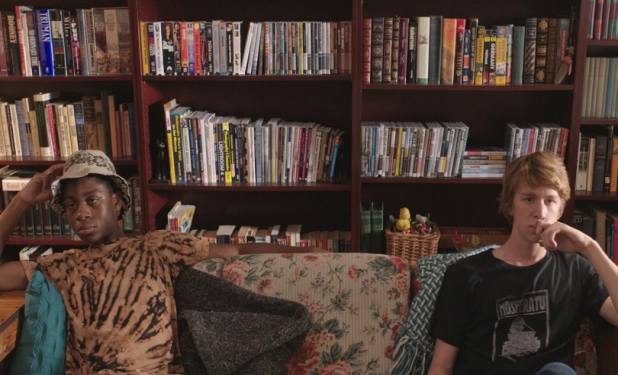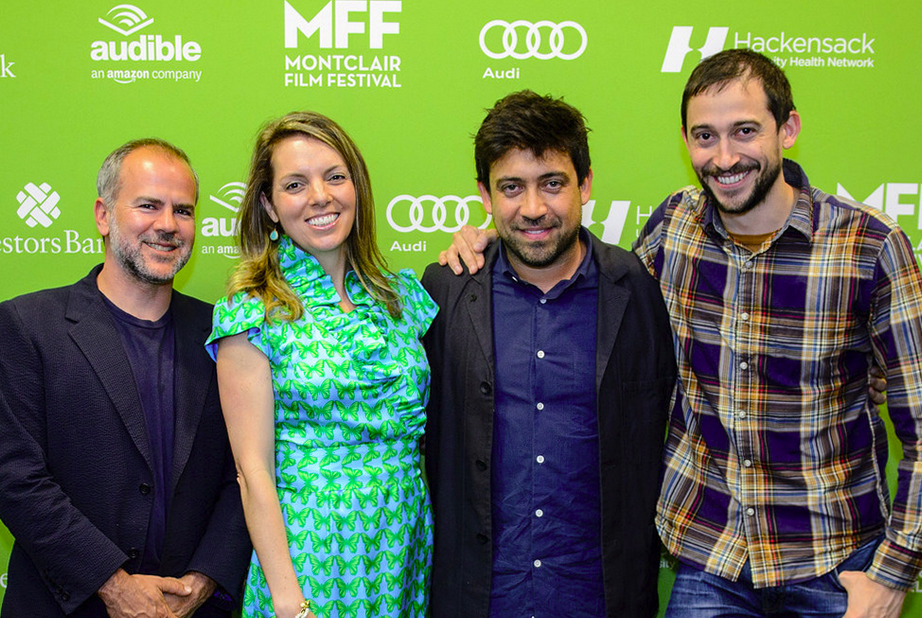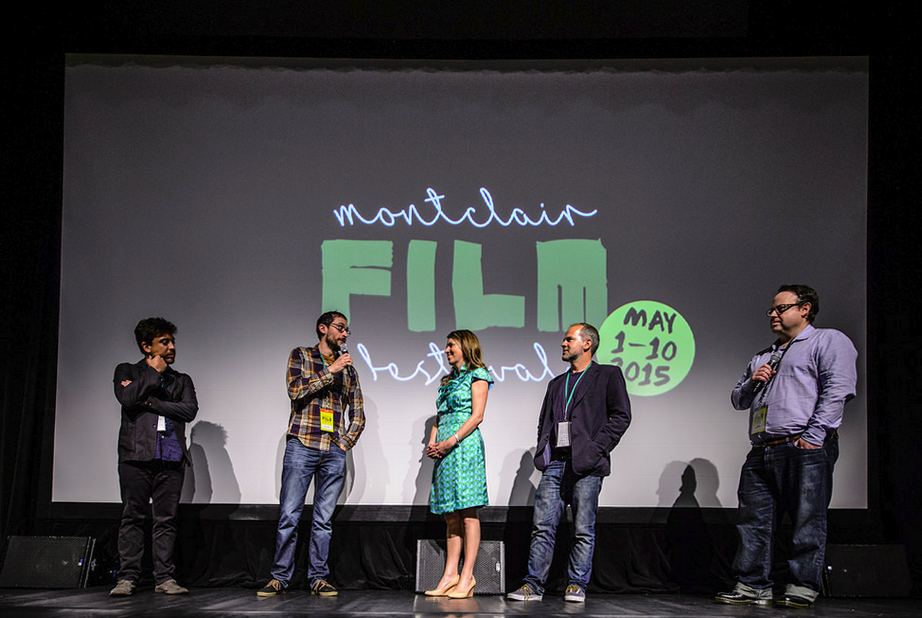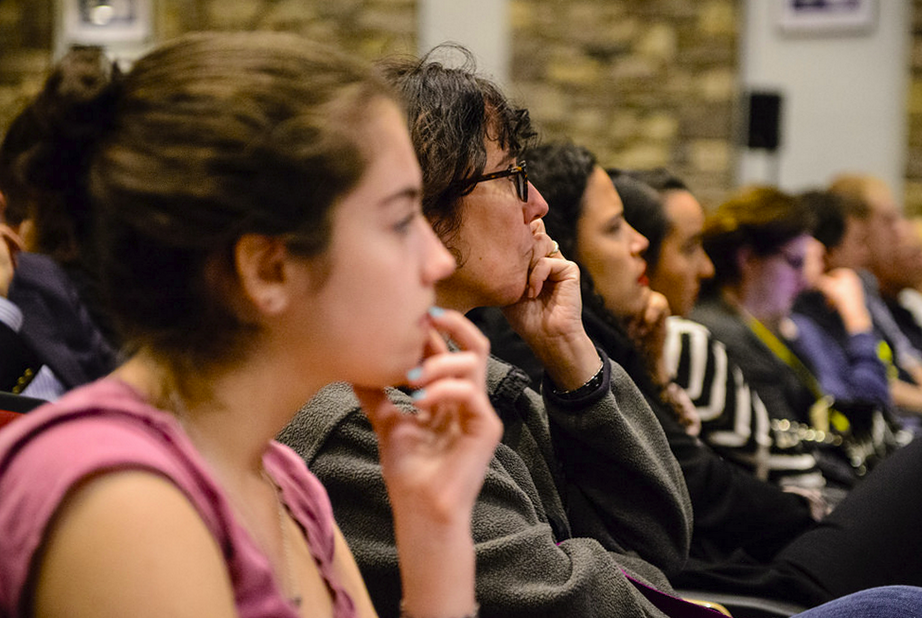Me & Earl & the Dying Girl, A Winner
There’s a clear appreciation for great films and the art of cinema running through Me and Earl and the Dying Girl. The movie’s protagonist Greg is a high school senior who’s made 42 charmingly horrible movies with his “co-worker” Earl, featuring titles that play off of classic movies like “Eyes Wide Butt” and “2:48 Cowboy.”
Greg’s superficial concerns are challenged when he’s asked to make a movie for Rachel, the movie’s titular Dying Girl. This highly stylized and briskly witty new movie works around many of the familiar tropes of teenage coming-of-age dramas by layering in genuine, beautifully poignant moments of authenticity from its characters. While Greg attempts to overcome his crippling lack of self-confidence, he develops an unexpected kinship with Rachel, as her cancer grows worse.
Previously a winner of the Grand Jury Prize and the Audience Award at the Sundance Film Festival, Me and Earl and the Dying Girl helped close out the final weekend of the Montclair Film Festival, winning MFF’s Narrative Feature Audience award earlier in the evening at the first annual Montclair Film Festival Awards.
From the film’s onset, this hilarious, heartfelt new movie from director Alfonso Gomez-Rejon and writer Jesse Andrews (who wrote the book, as well as the film’s screenplay) jumps between live action, fantasy and claymation sequences at a rapid pace. Greg speaks to his audience through a voiceover that humorously, and effectively, illustrates his outsider teenage perspective. Much of the dialog in the movie is sharply funny, coming from the characters’ unexpected eccentricities that feel warmly reminiscent of Wes Anderson films.
Me and Earl and the Dying Girl’s dynamic camera movements are mesmerizing, spinning around the film’s stars only to land on stunningly well-framed shots. Repeated shots help to establish the length of the story’s timeline but the wonderfully detailed production design also demonstrates the passage of time, as well as thoughtfulness about the inner lives of these high school characters.
On hand to introduce the film and answer audience questions after the movie, director Alfonso Gomez-Rejon, screenwriter Jesse Andrews, executive producer Nora Skinner, as well as producer Jeremy Dawson discussed Me and Earl’s use of homage, the origins of bringing Jesse’s book to the screen, and how a producer’s job can often amount to tracking down sugar free ice cream.
Read excerpts from the Me and Earl and the Dying Girl MFF Q&A below (and look out for spoiler warnings toward the end):
How’d you come together to turn Jesse’s book into a movie?
Jesse: I wrote a book. Incredibly, to me, it got published. My agent sent it out trying to sell the film rights. The manuscript got in front of someone named Dan Fogelman, who’s a producer not here tonight. and when my agent said the insane idea that this author who had never really read a screenplay could maybe write one, which is maybe insane, they said, “Do you want to do that?” I was like, “Yes! Jesus! Of course! That’s incredible. What’s wrong with you?”
It was a process in which every new person who came on board was incredible. Dan was the first of those and then everyone at Indian Paintbrush was. We got the script into shape and Alfonso came on and it was just so clear that this was someone who got the script maybe even more than I got it. He had more to add to it than I did. I was just happy to do whatever he wanted with it.
Alfonso, you had the history of cinematic language to play with the film–structuring a movie about movies in a way, but also about people. There are of course the recreations but there’s also a lot of homage and reference in the film itself. Could you talk about that?
Alfonso: The details–yeah, I was going crazy. In pre-production I knew on some level I had an opportunity to thank all my mentors and my heroes. I’ll probably never have another chance at this again, so it was this list I’d work on over and over again. How do you pay homage to all these people?
We had boards in my office with categories. So the first edition was Scorsese and Scorsese would appear somewhere, Thelma Schoonmaker. This stuff is everyone, Last Waltz t-shirts and film forum, and the films within the film. A lot of thought went into that and then it was a group effort getting those done. Tracking some of these down, some of the right posters and eventually we got most of them. Some of them didn’t make the cut–it kills you a little bit.
Nora & Jeremy, what was the collaborative process like in producing? I think sometimes people are confused about what producers do.
Nora: Sometimes we get confused, too.
Could you talk about how you guys brought this to life and seeing it through from the beginning?
Jeremy: I wouldn’t be here if it wasn’t for Nora. I worked with Indian Paintbrush before and she had been developing this project. They sent me three scripts saying, “We have a couple of projects that may happen this year.” I read them all and this film was the one that kind of had the most heart, humor and life. Nora said, “I want to get you on the movie.” She kind of orchestrated the fact that I’m here.
When you say what does a producer do, because my parents ask me that all the time, it’s basically all the stuff nobody else wants to do. I was just thinking the first scene we shot in this movie was the ice cream on the porch scene. Before we started to shoot we did it as a pre-production shoot day. So it’s this guy’s first shoot day and I should be worrying about everything else but I’m worrying that I happen to know that one of the actors, RJ, is diabetic. And they’re eating ice cream. We’ll do 22 takes and the guy is going to end up in some kind of diabetic shock. We found some popsicles that were sugar free but that was kind of what a producer does [laughs].
Nora: I work at Indian Paintbrush and as Jeremy was saying this is one of the projects that we were developing. It was one of the first scripts that I read when I came to Indian Paintbrush and I loved it so much. I really championed it within the company and tried to start putting together a team around it to match the great screenplay that we had from Jesse and the amazing director we had on board.
We brought Jeremy in and then from there I think one of the jobs of the producer is the chemistry. We were trying to put together this fantastic design team with Alfonso leading the way in terms of pointing out the best people because everything that you see on screen that you’re reacting to – it’s not just the writing and directing and these great actors but also the production and set design. Jennifer Eve’s costumes, the music, all of it. So as producers we’re constructing that team and trying to put the pieces together to find the right piece. And getting ice cream, yeah.
Alfonso, are you going to go back to horror following your work on American Horror Story?
Alfonso: I wouldn’t count it out but not immediately. I think I was being defined as the horror guy all of a sudden and I have a lot of interests. Hopefully they’re all personal in some way. So not immediately but soon, sure. I do like that kind of filmmaking but I wanted to challenge myself to tell more of a personal story and it’s a different kind of high. I’ll probably be chasing this high for a bit, but maybe.
It’s a very human film, the interaction of the young actors in particular, what was it like to bring them along on this story?
Alfonso: It was an absolute joy. The film was actually about to come together about a year before it actually did. Olivia was pretty much cast as Rachel, the Gregs were down to about three, it was a very long process because they auditioned over and over again and by the end we’re auditioning with all the big scenes. We did very long auditions because we had to make sure that–certainly Greg, a lot of it’s riding on Greg because I really identified with him and wanted to take that journey–that the comedy was effortless and the dramatic beats were also not over the top. That they were natural, naturalistic.
So by the time we actually shot the film, we had talked about those scenes over the course of many, many months and we would rehearse everything else–we talked over them in pre-production, maybe over dinner– but we never actually rehearsed those big scenes to keep them fresh because they had done them so many times [in auditions].
RJ–who in the film plays Earl – it’s his first movie. The Earl that I had dropped out for scheduling issues a few weeks before we started shooting. We almost, I think, lost the movie because of it. RJ came at the very end and submitted a video. He had just moved from Florida to Los Angeles and it was just perfect. It was a different version of Earl, but I couldn’t imagine the movie without him. Together they just created a perfect unit and had the perfect energy. The beautiful coming-of-age in each one, where Earl probably came of age when he was a kid and [Spoilers for Me & Earl and the Dying Girl ahead] then Olivia follows when she decides to stop treatment and of course Greg at the end.
[More spoilers for Me & Earl & the Dying Girl from here on out] What was the thought behind making Greg’s movie for Rachel an abstract film and the use of the close-ups in that scene?
Alfonso: Originally in the script that Jesse wrote it was a beautiful ending that worked so well on the page, which was a montage of all their horrible films. It was very effective. Then we talked about how it seemed like it should evolve into something else, otherwise–first of all, maybe the joke wouldn’t scale by the time we get to it. I just had a feeling that–we both talked about this–that he should be finding his voice. How do you express that deep love and confusion in all of that into a film? I thought it should be with abstract shapes. Like an homage to abstract film but it had to be something like that.
One of the first meetings I had with Jeremy and Nora do in New York, I was very nervous because I was going to pitch them this ending that is the abstract film. I knew at this point I would be fired. They immediately embraced it. We felt like we were in great hands and everyone was making the same movie. Then Ed Bursch and Nate Marsh created that beautiful animation.
That was one of the most wonderful things for me as a filmmaker is being able to sit with them after the wrap, come over my house and have a drink while listening to music, or look at some experimental filmmaking, to be able to talk about what that emotional journey was. What was that narrative. It made me think about it, and articulate it in ways I don’t think I’m feeling. I think it was the best way of expressing those feelings and also to show [Greg’s] evolution as a young artist, finding his voice, I thought that was nice.
The shooting of that scene… I designed the schedule so we would have most of the day to shoot that because I didn’t want to be rushing. I only had 23, 24 days to make this. That was one scene I did not want to rush. That was very carefully storyboarded in pre-production. The morning of when the animation came in we timed to certain shots. When we did one rehearsal with the real nurses that were there and started to shoot it nothing worked. It was a completely wrong approach to that scene. It belonged to the design of the opening of the film but it didn’t belong at the end. And it just felt like something was off so we just stopped for a bit.
I don’t think we shot anything until after lunch. So my full day is now half a day. It was the last day. We were all a mess. None of us wanted to finish the film because we all became close throughout the process and we were ending on this note. It was very, very emotional and I felt like a complete failure. Then it just became about stopping and simplifying it. Choosing the steadicam which I don’t particularly like because it has a kind of dreamy [quality], even when it’s trying to be still it just kind of [shakes]. That was kind of accidental for me. We just stayed on the takes. That’s all it ended up being. Documenting the scene as simply as possible and then in editorial choosing the sound. It was so fun to look at. They were doing so much, it was much more interesting. We tried so many versions of that scene, but their faces were much more interesting.
Nora: When Alfonso was talking about that scene, you said something beautiful that stayed with me forever and it was about what happens to Rachel in the scene. The way Alfonso described it was not that she was dying but that she was becoming energy. I think that you can see that on the screen. You can see her going into a different state. It was such a beautiful way to describe it.
What went into your decision to have the whole scene where Rachel tells Greg that she’s stopping treatment play out in a single shot?
Alfonso: It was meant to be the master shot followed by a couple close-ups. We were supposed to shoot that at the end of a previous night but all those days in Rachel’s room… it’s a lot of Olivia actually. A lot of heavy scenes back-to-back. They were too tired to go there for such a long scene, so we just talked about it, we blocked it. Then Chung-hoon Chung who shot the film picked the shot. By the time we were already pre-lit, the actors came in and we did it. It was four takes and that’s the fourth one. I thought in the moment that it felt so true, so honest, and it felt right. It felt so intimate and real.
Even the way she’s composed is so monumental. She’s taking control of her life and he’s like a child in her past, tiny. It just kind of seemed to tell the story. After that last take we didn’t do the close-ups, we felt good to move on. It was scary but it’s quite exhilarating when you do that. Then you’re stuck with it but at the same time it just felt right. They were very happy about that, too, because something was very honest in that tone.
Why didn’t we learn more about Earl?
Jesse: It is very partial this view of him. We see him almost as Greg sees him. That’s certainly how he is in the book. The book is in the first person. Because it’s in the first person we see his world as he presents it to us, as he understands it, as he himself has explored it. That incompleteness I felt was faithful to this journey that he’s going on. By the end he has this fuller sense of his friend. He’s seen something of him that has always been there that he hadn’t registered.
A big differences between the movie and the book is that the movie then is in the third person. We see everyone from the outside. It still has traces of his way of telling the story and I think that is one.
Alfonso: Jesse did write a beautiful scene at the end between him and Greg where [Earl] does tell us about his dreams and who he wants to be, which is more like Greg’s dad. A family like that. It’s a beautiful scene, beautifully performed at the shiva. But what happened was in editorial there were two big scenes–Greg addressing the auditorium with the student body and the scene between the two friends that was a break-up of sorts–what happened cutting room was that after the hostile scene the movie didn’t want to stop for dialog. People had brought their own narratives to it and there’s been so much talking in it… and then the movie was a little bit like Rachel’s lesson: it’s okay to be quiet for a while. We just wanted it to be quiet.
We tested it back and forth. With that scene, without that scene, the shorter version of that scene. Where Earl does say a lot of what he wants and who he is. It’s just it didn’t belong within the movie. The movie worked better when it was silent and you got that they were going to be ok. Maybe the shiva is the wrong scene for them to talk about their break-up. It just didn’t work as well as it did in the screenplay.
What was behind the choice to have the narrator insist that Rachel will not die, only for her to ultimately die in the film?
Jesse: It’s not in the book, and it is kind of sadistic, and I apologize for that. This was something that Dan and I came up with together very early on as a kind of way of framing the story. Making some narrative tension there. He suggested it, and it felt very, very right to me, the idea that [Greg] would lie about it. Not that he’s doing it to manipulate the audience so much as that he still can’t accept it and some insane part of him is hoping that it’s going to turn out some other way even though that’s an insane thing to think. That’s the measure of how he can’t accept what’s happened. How incomplete this thing that he had with her feels. He’s hoping that there’s more completion, there’s some more part of the story itself.



